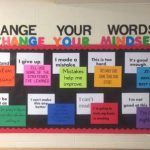What Teachers Need to Know About Dyscalculia
Dyscalculia is a learning disorder that affects an individual’s ability to understand and work with numbers. Unlike dyslexia, which affects reading and writing, dyscalculia specifically impacts mathematical skills. It can make simple arithmetic calculations difficult, and individuals with dyscalculia may also struggle with concepts like telling time, estimating measurements, and understanding patterns.
For teachers, it’s important to recognize the signs of dyscalculia so that students can receive the support they need to overcome their challenges. Some common signs of dyscalculia include:
Difficulty understanding number concepts: Students with dyscalculia may struggle to grasp basic number concepts like counting, comparing quantities, or understanding the value of numbers.
Inability to perform basic math operations: Simple calculations like adding, subtracting, multiplying, or dividing can be very challenging for students with dyscalculia.
Trouble with number sequencing: Ordering numbers or understanding number sequences can be difficult, making it hard for students to follow numerical patterns or grasp the concept of place value.
Poor spatial awareness: Dyscalculia often affects a student’s ability to recognize patterns, judge distances, or understand spatial relationships, which can make it difficult to understand graphs, charts, or geometric concepts.
Difficulty with time management: Dyscalculia can lead to challenges in understanding and keeping track of time, making it hard for students to manage their schedules or understand the concept of elapsed time.
To support students with dyscalculia, teachers can implement various strategies:
Provide visual aids: Visual representations of numbers and mathematical concepts can help students with dyscalculia understand and manipulate them more effectively. This can include using manipulatives, diagrams, or charts.
Break down tasks: Breaking math tasks into smaller, more manageable steps can make them less overwhelming for students with dyscalculia. This can help them focus on one concept at a time and build their understanding gradually.
Use multisensory approaches: Incorporating multiple senses, such as hearing, seeing, and touching, can enhance learning for students with dyscalculia. For example, using auditory cues, visual aids, and hands-on activities together can reinforce math concepts.
Provide extra practice and repetition: Students with dyscalculia often benefit from additional practice and repetition to reinforce their understanding of math concepts. This allows them to build their skills at their own pace.
Offer alternative assessment methods: Traditional tests and assessments may not accurately reflect the abilities of students with dyscalculia. Providing alternative assessment methods, such as oral exams or projects that focus on real-world mathematical problem-solving, can better showcase their understanding.
By recognizing the signs of dyscalculia and implementing appropriate strategies, teachers can help students with this learning disorder overcome their challenges and develop stronger mathematical skills. With the right support and understanding, students with dyscalculia can thrive in the classroom and beyond.


